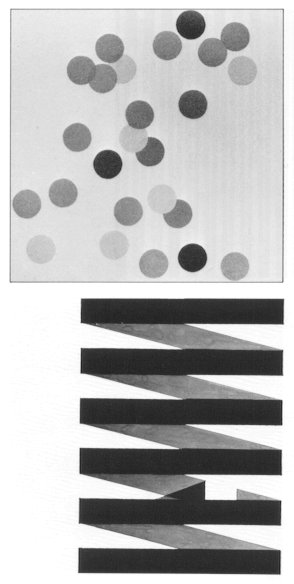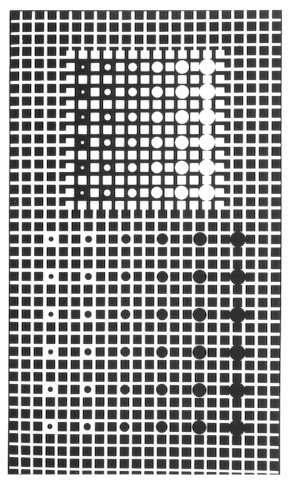|
(1) Expression of rhythm using congruent shapes An ordered, decent, and static rhythm is generated by arranging shapes with the same color and the same spacing (Fig. 480). On the other hand, a strong feeling of movement is expressed, although it was composed by the same artist as shown in Figure 482. A significant difference in theses two works is created because a dynamic effect is generated by composing the shapes with oblique and not vertical configurations. Of course, the difference in configurations using straight lines or curved lines (wave form) should be noted. In Figure 481, a static rhythm is expressed by composing the arrangement maintaining strict "equal" order similar to Figure 480. However, since a method of color arrangement where the color gradual changes is employed, it has a stronger dynamic effect than that of Figure 480. Furthermore, a stronger element of "movement" is expressed in Figure 479. Though the shape is the same, the color and configuration are gradually changing. The method using gradual change is suitable in expressing smooth movement towards a direction, and is a convenient method used to express rhythm. The movement is made even stronger in Figure 483. The element used here have only the same shape, but otherwise all the elements are different. The rhythm of a disconnected and free feeling is expressed here. When the rhythm is static, decency and elegance are felt. but sometimes quiet and boring feeling are generated. At such time, the tedium of the surface can be saved when the rhythm is partly broken as an accent in one or two places. (Fig. 484) In Figure 485, two kinds of assemblies are employed.
One is an assembly of similar squares, and the other is an assembly of
circles. These are assemblies of similar shapes as described in the next
section. These give variations on the surface.
|

